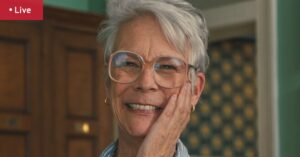
A woman adult with a bald head is holding a pink cancer awareness ribbon, symbolizing support for a cause
Women diagnosed with early breast cancer face a relatively low long-term risk of developing a second primary cancer, according to a study published by The BMJ. The research indicates that the risk is only 2-3% higher than that of women in the general population, providing reassurance to many breast cancer survivors.
The study’s findings are based on data from the National Cancer Registration and Analysis Service for England, examining 476,373 women diagnosed with early invasive breast cancer between 1993 and 2016. These women, aged 20-75 years, underwent surgery, and their health was tracked for up to 20 years. During this period, 64,747 women developed a second primary cancer, but the absolute excess risks compared to the general population were minimal.
Understanding the Risk Factors
While breast cancer survivors are generally at an increased risk for second primary cancers, previous studies have shown inconsistent risk estimates. The type and risk of a second cancer can be influenced by initial treatments, as well as social, lifestyle, and genetic factors.
The researchers found that by 20 years post-diagnosis, 13.6% of women had developed a non-breast cancer, such as womb, lung, or bowel cancer, which is 2.1% more than expected in the general population. Additionally, 5.6% developed a contralateral breast cancer, 3.1% above the expected rate.
By 20 years, 13.6% of women developed a non-breast cancer, 2.1% more than expected, and 5.6% developed contralateral breast cancer, 3.1% more than expected.
Age and Treatment Influence on Cancer Risk
The study highlighted variations in risk based on age at first breast cancer diagnosis. Younger women showed a higher excess risk for contralateral breast cancer compared to older women. For instance, a woman diagnosed at age 60 has a 17% risk of developing a new non-breast cancer and a 5% risk of contralateral breast cancer by age 80, compared to 15% and 3% respectively in the general population.
For women diagnosed at 40, the risk by age 60 is 6% for both non-breast and contralateral breast cancer, compared to 4% and 2% in the general population.
Adjuvant treatments also play a role in the risk of second cancers. Radiotherapy was linked to higher rates of contralateral breast and lung cancers, endocrine therapy with uterine cancer, and chemotherapy with acute leukemia. Despite these associations, the researchers estimate that only about 7% of excess second cancers may be attributed to adjuvant therapies, emphasizing that the benefits of these treatments generally outweigh the risks.
Implications for Clinical Practice
The study’s authors caution that their findings might be influenced by incomplete cancer registry data and lack of information on family history, genetic predisposition, and lifestyle factors such as smoking. Nonetheless, the comprehensive nature of this long-term study provides valuable insights for both patients and healthcare providers.
These results are significant for clinical practice and policy, potentially guiding future research on cancer risk. In a linked opinion article, patients expressed the importance of having access to detailed information about the risks of second cancers after breast cancer. They emphasized that while not everyone might want all the details at the time of diagnosis, this information should be readily available for those who seek it.
“Information on risks should be readily available. It helps us to plan our lives and think ahead to the future,” patients concluded in the opinion piece.
Overall, the study underscores the importance of informed discussions between patients and clinicians regarding the risks and benefits of adjuvant therapies. As the healthcare community continues to advance in understanding cancer risks, such studies play a crucial role in shaping patient care and expectations.







